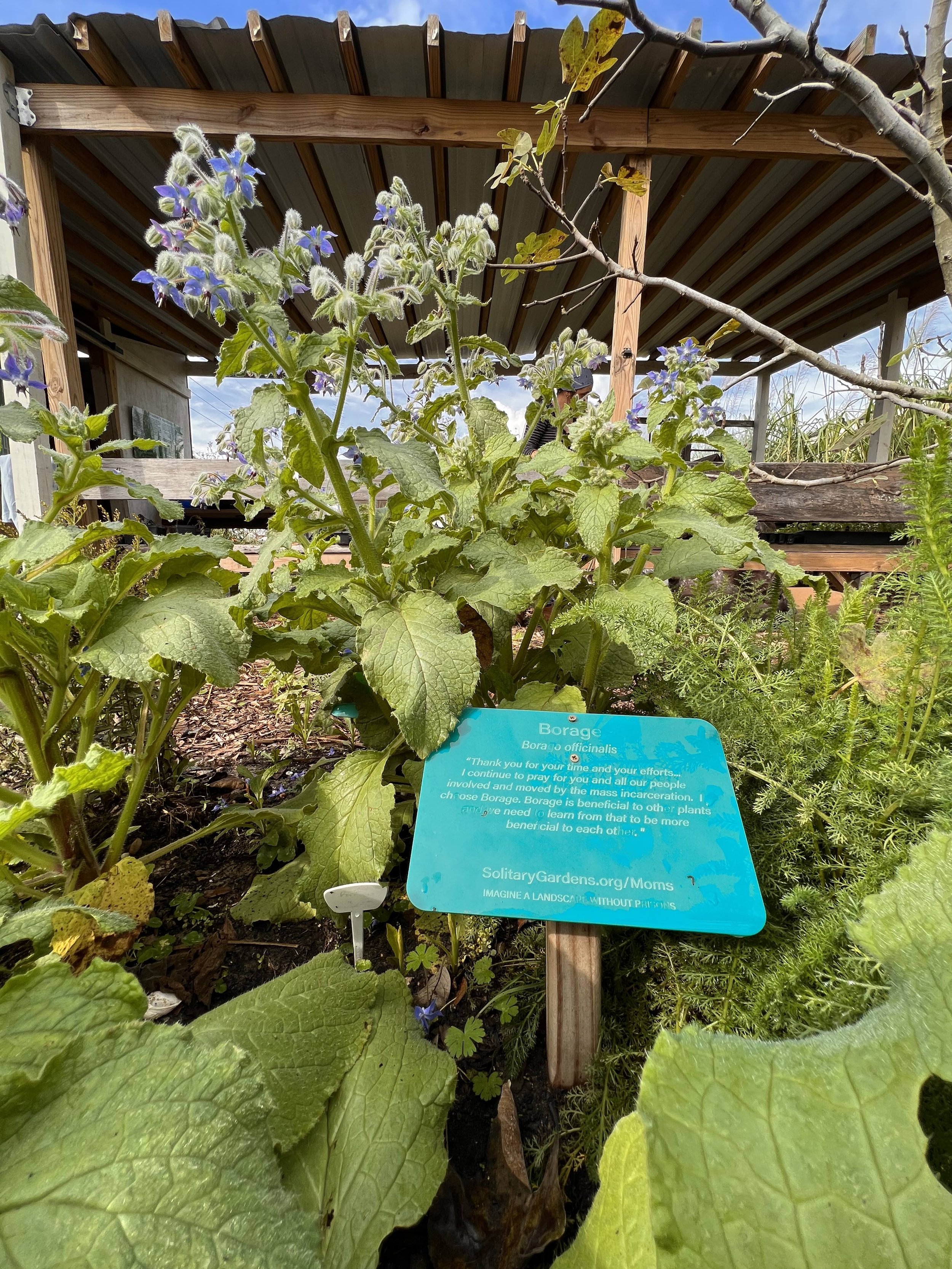Meet the plants: borage
I’m not a woman. I’m not a man. I am something that you’ll never understand.
- Prince
Borago officinalis
Borage originated in Aleppo, Syria. The name “borage” comes from the Arabic name for this plant, abu arak or “father of sweat,” because it induces sweating, which can be good if you have a cold coming on. Traditionally borage was cultivated for culinary and medicinal uses, although today it’s commercial cultivation is mainly as an oilseed. Borage is used as either a fresh vegetable, cover crop, or dried herb. As a vegetable, borage, with a cucumber-like taste, is used in salads or as a garnish. It’s flower is often used to decorate desserts and cocktails in our house :). The flowers can also be made into pink or blue dyes. The young, softer leaves can be cooked into soups or sauces.
Easy nemonic: borage rhymes with courage; this plant was said to have been eaten by Roman soldiers for strength & courage before they went into battle . Its Celtic name, barrach, means “man of courage,” a nod to borage’s psychological effects. Medieval knights wore scarves embroidered with the flowers for the same reason. Pliny said that borage-flavored wine could bring forgiveness when drank. In Elizabethan England, it was used to expel pensiveness and melancholy, and, the candied flowers could comfort the spirits of those sick from consumption or passions of the heart. One old wives’ tale states that if a woman slipped a bit of borage into a promising man’s drink it would give him the courage to propose. Borage flowers in the house are said to bring about domestic tranquility. Naturopathic practitioners use borage for regulation of the metabolism and hormones and consider it to be a good remedy for PMS and menopause symptoms such as the hot flash.
Borage is known as the “magic bullet of companion plants” as it is beneficial to almost everything it is planted near, especially strawberries, cucumbers, gourds, tomatoes, brassicas, and cabbage. It attracts honey bees while repelling many insect pests.
According to legend, one should hold up a borage flower in both hands, silently recite the name of ones’ love, then let it fall into the water. If the borage moves with the water, then the love will fail- if the borage floats quietly in the middle of the water, the love will last forever. (lol on forever)…
borage flowers at solitary gardens’ Incarcerated Moms Garden
Borage is a prickly, hairy plant with so many culturally assigned “masculine” qualities. It also helps to regulate metabolism and mitigate PMS in people born with uterus’. In the garden, Borage is a loving nurse plant to many.
Borage reminds us to interrogate our socialized understanding of masculine and feminine qualities and avoid succumbing to the pressures of toxic masculinity or fears of femininity (misogyny). American society is built on limiting constructs that create oppressive hierarchies (insert race, gender, age, time etc…). Listen to Moving Beyond The Gender Binary by Alok and contemplate the following questions;
How do you define masculine and feminine? In what ways do your definitions uphold oppressive binaries? Have you been socialized to assign certain qualities to certain genders? Why? How does this inhibit the fullest expression of your being or so-called others?
Is toxic masculinity something that only hurts women? Is misogyny detrimental to men? How does borage tell us the notions of masculine/ feminine binary need to be redefined or eradicated?
What other plants escape limiting binaries and social constructs?
Borage in the Incarcerated Mom’s Garden, New Orleans

